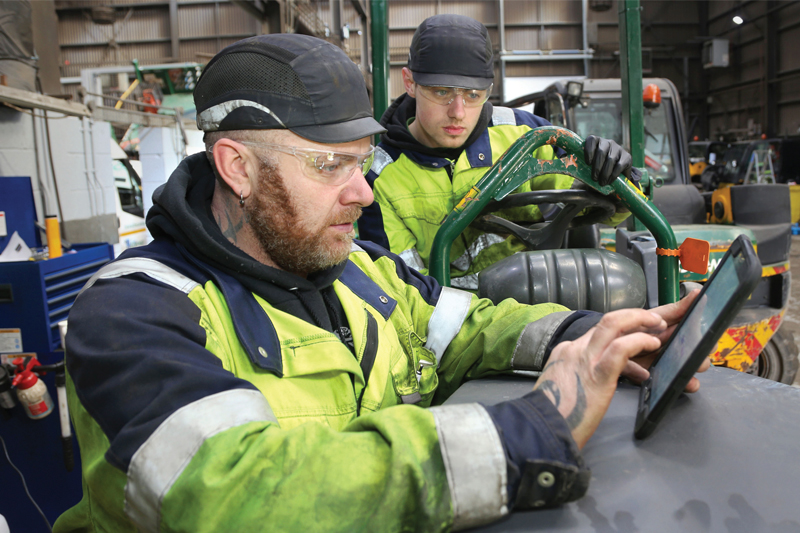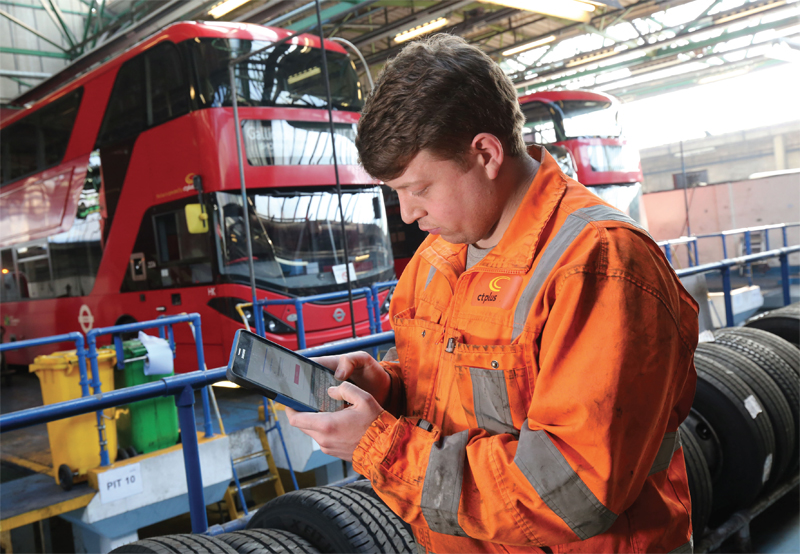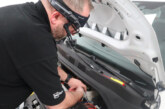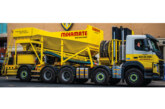
Patrick Tandy, Managing Director of Freeway Fleet Systems, offers some helpful advice on how to motivate and retain key workshop staff as automation leads to the introduction of new working practices.
Unemployment in the UK is at its lowest level since the 1970’s. Although there is a shake-up in the automotive industry due to declining diesel vehicle sales, with job losses at Jaguar Land Rover and Honda, it will not be long before alternative fuel vehicles fill the void, and will need mass production facilities and ultimately maintenance.
Economic growth is slow but steady, and a drop in demand for commercial vehicles is unlikely. Demand for workshops’ services will likely increase, meaning that retaining skilled fitters is crucial, as is attracting new recruits.
The job of fitters is beginning to change as workshops introduce digital systems. Within the next three or four years, paper will begin to completely disappear. The DVSA is already moving towards electronic reporting with its Earned Recognition scheme, and busy workshops are beginning to introduce tablets to replace job sheets, time sheets and inspection reports. The introduction of wireless technology in the workshop is part of a wider digital transformation encompassing stores, purchasing, accounts and transport operations. What has this got to do with worker retention?
The answer is change. With the introduction of a new generation of computer systems offering mobile working, workshops are arguably seeing the biggest change in the way that they operate since the introduction of power tools. The paper forms, filing cabinets, wall charts, clocking-in cards, and document archives that have been used for decades are about to disappear. These systems are also introducing more efficient, productive, and safer methods of working.

Moving away from paper to digital working represents a major commitment by a company. For those familiar with their paper forms, the arrival of a tablet may not be particularly welcome; it’s not easy to get staff fully on board.
However, to successfully introduce digital working, it’s more important than ever to retain staff. It’s essential to secure engagement with the workforce right from the outset, with key workshop staff being given a proper stake in the project, as ownership and responsibility will help win their acceptance and help address any objections. The software is very simple to use and provides considerable added benefits to getting work done, such as instant access to historical job data, parts issuing, and quicker and better job allocation.
One successful approach to engagement is identifying and supporting ‘Workshop Floor Champions’. Experienced workshop staff possess a wealth of knowledge, and it’s important to utilise this knowledge quickly. Having been stuck with a paper job card for years, they will welcome being able to make instant digital changes and see what they have helped to create. Whether it be assigning componentry to inspection checks or calculating standard hours, they know the assets inside out.
Although the more experienced and mature fitters sometimes take a little longer to grasp using a mobile device, the quality of data they subsequently enter is usually very good. For younger recruits who grew up in the smartphone era, the tablet is very familiar territory, but their lack of experience means that their data entry can be a bit shoddy. It’s therefore a good idea to give more experienced fitters responsibility for training new staff and apprentices. They will not want to be shown up by younger, upstart ‘Millennials’, and with the added responsibility, they will want to make a good impression and set the highest standard of data entry.
With the right system, the switch to digital will provide vital performance data on the entire fleet, from vehicle manufacturers to types, engines and parts, right down to an individual rubber gasket. More importantly, it will provide a real insight into the workforce so that each individual can be assessed fairly. Are they doing things properly? How productive are they? Are they good at some jobs and bad at others? This intelligence will help considerably with managing workers and providing the right support to help them improve, and reward them when they do. People can be assigned to jobs that best suit them and will motivate them. The ‘system’ therefore becomes a valuable personnel management tool that can be used to get the most out of each person, and that will make them feel more valid and motivated. If they are happy in their job, this will be reflected in the staff’s attitude, which is good for business.
Getting to grips with software
Suppliers have to get things right as well, so introducing a system that is welcomed by those using it is vital; it’s arguably the most important tool they will use. With software constantly evolving, feedback is vital, so it’s necessary to really listen to the workshop users. Being able to respond to their needs keeps the system fresh and up to date, and significantly increases workshop floor enthusiasm and engagement.
As soon as the value of the tablets is seen and understood, attitudes will be invariably positive. In developing the software however, a fine balance is needed to not over-simplify what is actually quite complex data. It requires something that will be picked up by a well-built fitter with a large gloved hand. That really does put a premium on good interface design that balances the presentation of complex information in a limited smartphone or tablet screen, with an interface that allows for quick drilldown to additional information as it is needed.
Tablet and smart phone capture is often seen as ‘Big Brother’, and all about controlling and capturing data from the workshop floor. So it is important to provide the user with a tool that is genuinely useful; giving them things they simply didn’t have before. Turning the data capture devices into diagnostic tools significantly changes this dynamic. Giving immediate access to the precise record of fault data is really useful; for example, instantly seeing details of a repeat battery defect, the frequency of the defect, and the parts used when attending a breakdown for another instance of this fault.








